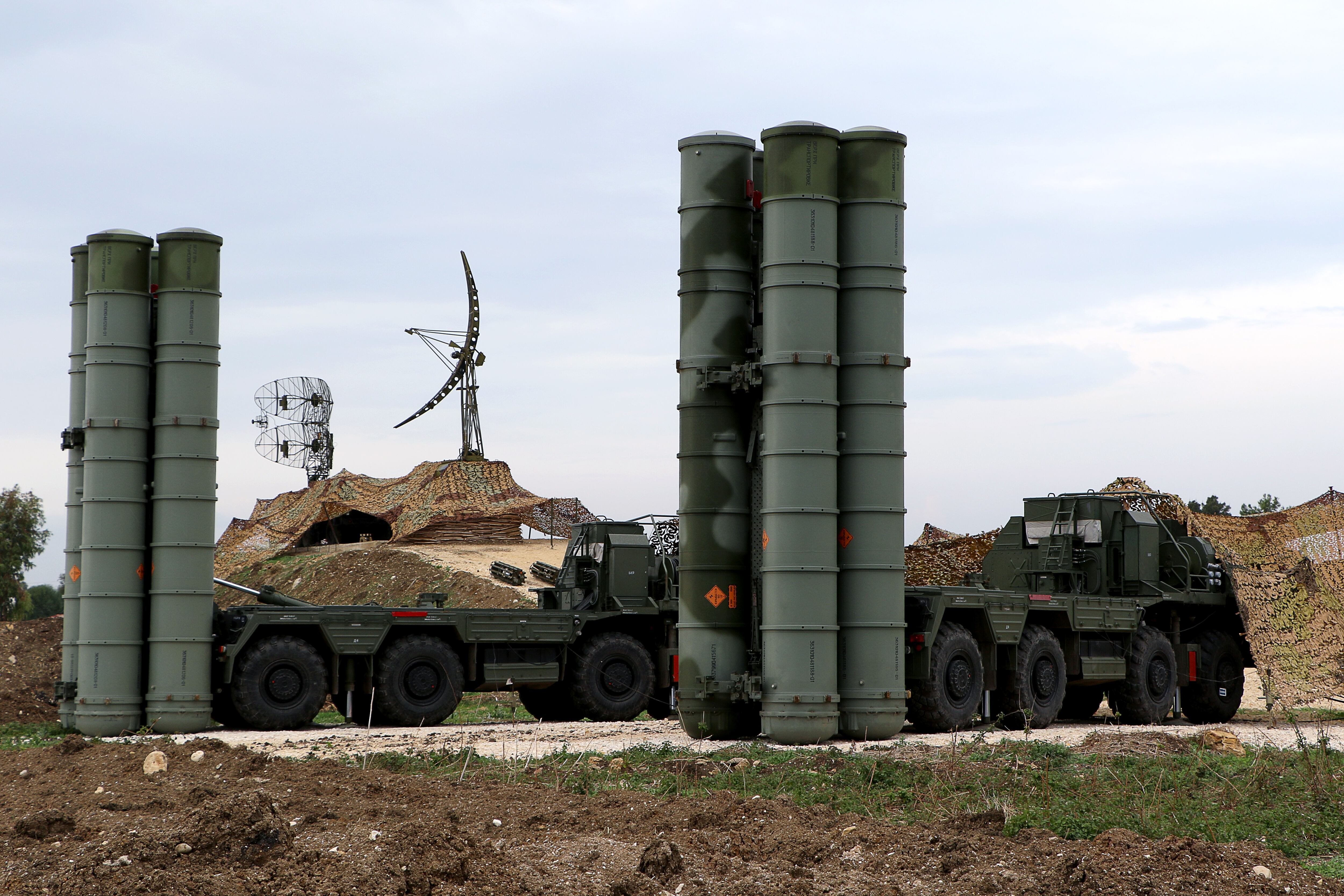WASHINGTON — Much like the other partners in the F-35 joint strike fighter program, Turkey on June 21 accepted its first F-35 in a festive ceremony with cultural touches and fanfare.
Images of the flag waving were shown. National anthems were sung. A band played traditional music, while a man pirouetted onstage wearing leather bird wings. And finally the curtain dropped, revealing the first Turkish F-35A.
But beyond today’s rollout celebration, lawmakers are increasingly worried about Turkey’s human rights record and ties to Russia — particularly a potential deal for Russia’s S-400 anti-aircraft weapon system. On Monday, the Senate passed a defense policy bill that would block the transfer of future F-35s to Turkey.
RELATED

On Thursday, Senate appropriators added an amendment to the foreign aid bill that would put a stop to future deliveries if Turkey does not cancel the S-400 purchase. And 44 House lawmakers have already signed off on a letter urging Defense Secretary Jim Mattis to do the same.
All of that controversy seemed far removed from the ceremony in Fort Worth, attended by Lockheed Martin executives, Turkish defense officials, and representatives from the U.S. Defense Department’s F-35 joint program office and Defense Contracts Management Agency.
After the country’s F-35 was rolled out, Turkish officials took to the stage, where they repeatedly reinforced the idea that it would use its F-35s to promote NATO interests.
Turkish Maj. Gen. Reha Ufuk Er said that Turkey’s F-35s will “significantly augment” NATO alliance air capabilities and contribute to global stability.
“As you are all well aware, Turkey is located at the geostrategic and cultural crossroads between the East and the West,” he said.
“On the other hand, it’s geographic location and proximity to the conflict areas significantly increases the security challenges it faces. All of these factors necessitate that Turkey has robust capabilities to ensure her contribution to regional and global security environment.”
F-35’s technological features, ability to adapt to future threats and use by partners across the globe makes it a great asset to achieve that goal, Ufuk Er said, adding that he hoped the United States and Turkey would work together to explore ways to best use the joint strike fighter.
Serdar Demirel, Turkey’s deputy undersecretary of defense industries, also noted that the aircraft would help Turkey “strengthen the deterrence of NATO.”
Lawmakers and certain officials in the Defense Department and NATO have already stepped forward to register concerns that Turkey’s use of the S-400 alongside the F-35 could compromise the joint strike fighter’s stealth capabilities and potentially convey vulnerabilities to Russia.
“Any effort by the Government of the Republic of Turkey to further enhance their relationship with Russia will degrade the general security of the NATO alliance … and degrade interoperability of the alliance,” the Senate version of the fiscal year 2019 defense policy bill states.
CNN reported on Tuesday that Mattis is personally opposed to attempts by Congress to block future F-35 deliveries to Turkey, and that he is working with lawmakers to ensure that the Senate’s language is omitted from the final version of the defense policy bill.
Those provisions would prohibit transfers of F-35s to Turkey until the Defense Department develops a plan to remove Turkey from the program.
That may be easier said than done. Turkey plans to buy 100 F-35As total. As a partner on the program, it has helped finance the development of the joint strike fighter as well as providing select maintenance functions for European operators.
Turkish defense contractors also help build the F-35, and a video shown at the rollout included executives from companies such as Turkish Aerospace Industries, Kale Group, ALP Aviation and Ayesas, the only Turkish company involved in software development.
Turkey is set to hold a presidential and parliamentary election June 24 — and the outcome could affect the government’s willingness to continue pursuing the S-400.
However, today’s ceremony could be a boon for Turkish President Recep Tayyip Erdogan, said Aykan Erdemir, a former member of the Turkish parliament and senior fellow at the Foundation for Defense of Democracies.
“The rollout ceremony, which comes right after Monday’s Senate vote to block the transfer of F-35 titles, allows Turkey’s pro-government media to spin today’s development as Erdogan’s defeat of U.S. Congress and to boost his image as an indomitable leader,” he said. “This will be yet another setback for Turkey’s democratic opposition already suffering under Erdogan’s draconian state of emergency and uneven playing field in the country.”
After the delivery, Turkey’s first F-35 is set to move to Luke Air Force Base, Ariz., where the Turkish pilots will be embedded inside a U.S. Air Force training squadron and learn to operate the F-35 alongside American pilots.
Turkish maintainers have already started their training at Eglin Air Force Base in Florida, Ufuk Er said.
Valerie Insinna is Defense News' air warfare reporter. She previously worked the Navy/congressional beats for Defense Daily, which followed almost three years as a staff writer for National Defense Magazine. Prior to that, she worked as an editorial assistant for the Tokyo Shimbun’s Washington bureau.








